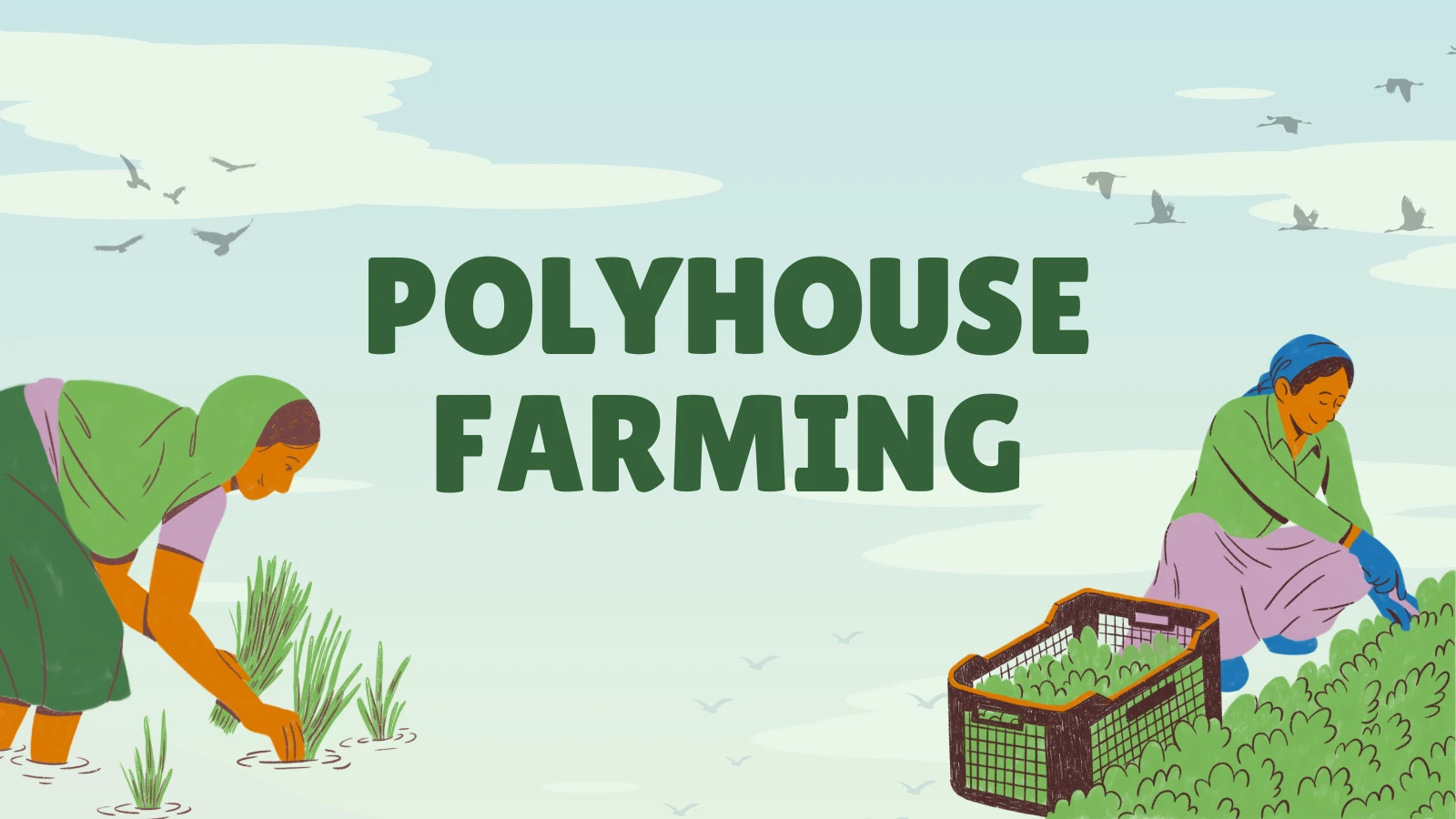With evolving times, modern agriculture is also evolving rapidly to meet the growing food demands of an unpredictable climate. One of the innovations in this evolving era that has transformed farming practices all over the world is polyhouse farming. It is known for its ability to grow crops all year round under controlled conditions. This has become a game-changer for the farmers who are seeking higher yields, better quality, and improved profits.
What is polyhouse farming?
The term “polyhouse farming” refers to the cultivation of the crops in a specially designed structure that is made of transparent polyethylene sheets. These structures, called polyhouses, are generally covered with transparent materials, typically UV-stabilized polythene sheets. This creates a controlled environment, mimicking an artificial climate, which allows the farmers to manage factors like temperature, humidity, light, and irrigation.
This is a protected cultivation method that is similar to greenhouse farming, where the plants are shielded from the external conditions.
Polyhouses come in many types depending on the design and purpose; they can be naturally ventilated, fan-and-pad cooled, or even climate-controlled high-tech models.
Polyhouse Farming in India
The National Horticulture Mission (NHM) and various state-level initiatives provide subsidies and training for farmers to set up polyhouses. In India polyhouse farming has gained a lot of popularity as a part of the government’s push towards sustainable and modern agriculture.
The first time the polyhouse method was adopted was in states like Maharashtra, Karnataka, Tamil Nadu, and Himachal Pradesh; now there are many more states that have adopted the polyhouse farming technique.
Also read: What is Bee Farming? Why is it important?
Benefits of Polyhouse Farming
There are various economic, environmental, and technological benefits of polyhouse farming, which makes it one of the most efficient modern agricultural systems. Some of the main benefits are
- Year-Round Protection: It allows farmers to grow crops throughout the year, no matter what external climate conditions are. This ensures continuous income and better resource utilization.
- Higher Yields: The crops that are grown under controlled environments tend to be much healthier and more productive. On average, yields can increase by 3-5 times as compared to traditional open field farming.
- Better Quality Produce: The crops grown through the polyhouse farming technique are uniform in size, color, and taste. The controlled conditions help maintain nutritional quality, which makes the produce ideal for export and the high-end retail markets.
- Efficient Water and Fertilizer Use: Through systems like drip irrigation and fertigation, water and nutrients are supplied directly into the plant roots, which minimizes the wastage and improves plant health. This makes the polyhouse farming technique a sustainable solution in the water-scarce areas.
- Protection from Weather and Pests: It acts as a barrier against the heat, wind, and pest attacks. Because of this, farmers are facing fewer crop losses, which is resulting in reduced dependency on the chemical pesticides and improved profit margins.
Challenges in Polyhouse Farming
Now despite the benefits, polyhouse farming in India faces many challenges that need proper attention in order to achieve large-scale adoption. These challenges are
- High Initial Investment: Building a polyhouse is a capital-intensive project; depending upon the size and technology, costs can range from 700 to 1500 rupees per square meter. Even though subsidies are available, the upfront cost is a problem for small farmers.
- Maintenance and Technical Expertise: These polyhouses require regular cleaning, monitoring, and repair in order to maintain an optimal condition. There are many farmers who lack the necessary training or the technical knowledge that is required to manage the automated systems.
- Power and Water Dependence: The continuous electricity and water supply is very important for operating the cooling systems, irrigation, and sensors. There are areas that have frequent power cuts or water scarcity, due to which the productivity can drop.
- Pests and Diseases Build-up: Even though polyhouses reduce the entry, closed environments can sometimes lead to a rapid disease spread if not managed properly through ventilation and sanitation.
- Market Linkages: The farmers who are growing off-season or exotic crops may struggle to find reliable buyers or export connections. So, without proper marketing and logistic support, the profitability can decline.

